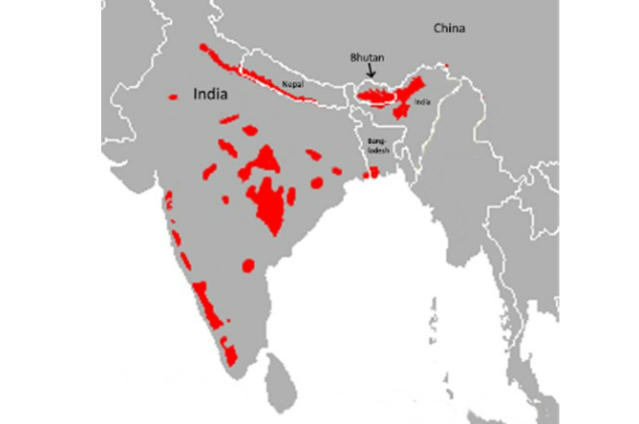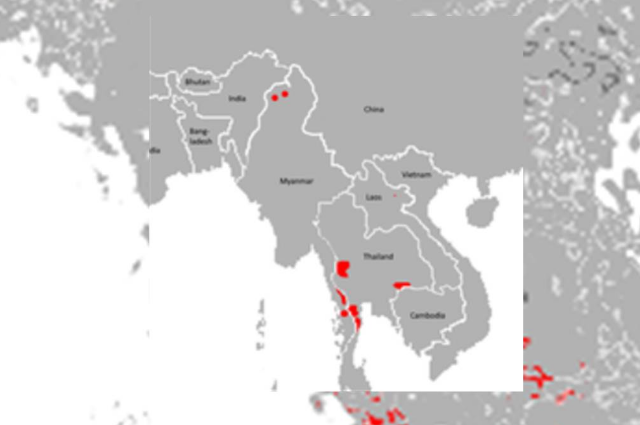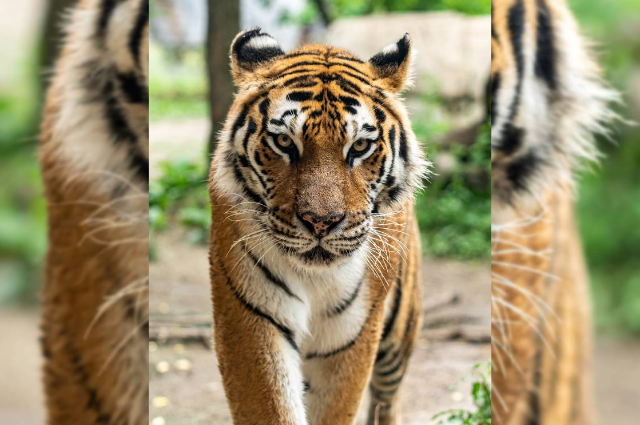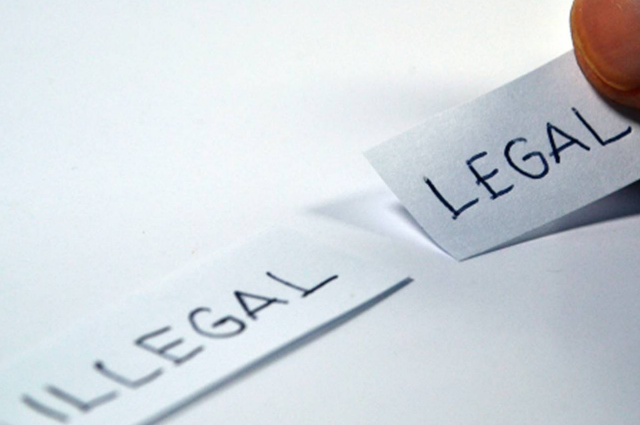INTRODUCTION
"Building a future in which humans live in harmony with nature."As per Wwfindia.org,
Every single element of this planet which is available naturally provides a sigh of relief and also a sense of. Some people can feel some can't because to see it needs love for nature and that element is missing in humans now. As if they had emotions and affection for nature they would not make such worse conditions for nature and its natural inhabitants which they have made. Nature has provided everything for humans to live their life with enough facilities. Humans, however, have turned things in such a way that it is annihilating the natural components which are harmful to the existence of both nature and humans. And the cause to do these things is to fulfill the ever-lasting desires of humans and to accomplish luxurious activities which are impossible to end. For instance, to make wooden Bed, Almirah, Door, windows, bats, and wooden handles, to make hydroelectric dams, to make stadiums, and production of cattle to full the desire cunning tongue of humans and make in numerous other things deforestation is done and natural resources are being exploited in an incessant way which leads to the devastation of the natural components and the lives of animals. Not even this, factories are producing chemical products for human use and are releasing harmful chemicals into the water bodies which are responsible for the pollution and destruction of marine life. In China, around 20 to 25 million trees are cut to make disposable chopsticks. In this case, bamboo are particularly cut down for it.
Having done all these activities humans are still not satisfied. They are inclined to do more and more to full their life easy and frictionless. They, however, are pretending to be unknown of this fact that they cutting that tree on which they are sitting. In a nutshell if I say they are digging their own grave. Humans have already destroyed so many things due to their mutual conflicts or on account to grow very fast to beat the other one. They are chargeable for the extermination of various valuable flora and fauna. Such as Dodo bird and Stellar's sea cow. Despite all these negative points, there is a hope to prove the conditions and to make the place livable for every living organism or biotic components. Here, we are to talk about such a great example or the afford which has lit a light to set an example to put more examples. There is no denying, we are going to discuss about a successful attempt to save the lives of the "Big Cat" , Tiger. We are talking about Project Tiger and the other attempts to safeguard the life of Tigers. It's a story of the revival of the Tigers from the adverse level to a little complacent level.
TIGERS AND THEIR SUB-SPECIES

As per to global tiger forum, there are total 41 wild cat species who are found around the world. Tiger is deemed as the largest living cat species in the wild. It's biological name is pathera tigers. Its body is comprised mainly of three colors one is orange or saffron, black strips and white color under the neck and stomach area. There is a fascinating fact about tiger, it is apparent that they are superior in size and strength despite that they avoid to contact with people and will even hide way from even a single person if they meet across. Hence, this wild and beautiful animals is deemed as " The Gentleman of the Jungle." Tiger chooses the lowlands and is frequently seen in grasslands, swamps, and mangroves. The Bengal mangrove ecosystem is a rich habitat for royal Tigers and they have adapted by being fervent swimmers. Nagpur is known as the ‘Tiger Capital of India’.
They can easily be distinguished among all the other animals because of its color and behavior. They are good swimmers and apt in the crossing the river with speed. With each strike of paw, they goes a foot away in the water. Unlike other cat member of cat family they like water and to cool off themselves in that. They are highly adaptable and range from the Siberian taiga to open mainland and tropical mangrove swamps. Tigers may have 10 to 15 years of lifespan in wild whereas can live longer than 20 years in captivity. Their average speed is around 60km/h. Two tigers can't have same pattern of stripes. Tigers live alone, except for mothers and their young. A male and female come together to mate, and then go their separate ways. Their gestation period is 93 to 112 days. In one time, a tigress can give birth to to 1 to 3 cubs. And she takes care of them for next 2 years. Thereafter they leave their mother for their own space of area. Its roar is captivative and scary. Its sound is scary and enough to be heard even 3 kilometers away from the source. It's is solitary animal and like to rest in day around the water bodies and interested to prey at dusk and dawn. They don't want to drive away his prey so much that's why they prey the animals with stratagem. Naturally first they observe his prey from a hidden space and hide himself and manage the things in such a way that the targeted animal cannot see him until he reaches to him. At the end, there is just the matter of one pounce to end the lifespan of the targeted animal. In terms of tactics, they are expert and know how to prey all kinds of animals whether it is bird of any big animal. India's tiger population was estimated at 2,967 individuals by 2018. Around 300–500 individuals are estimated in Bangladesh, 355 in Nepal by 2022, and 90 individuals in Bhutan by 2015.
SUB-SPECIES OF TIGER IN ACROSS THE WORLD
As per to my own views, "Nature is the only beautiful thing in this world."

When we talk and imagine about Tigers, the image which comes before our eyes is that of roaring tiger or chasing tiger of his prey or of walking tiger with attitude. On this planet there are total eight subspecies of tiger: among the eight at present five subspecies are present in the world. They are Royal Bengal Tiger, South China Tiger, Indochinese Tiger, Sumatran Tiger and Siberian Tiger. Three out of eight have extinct- Caspian, Bali and Javanese Tigers. Here, we are going to understand little about them. If I arrange them in order according to their size, including the extinct tigers then it will be in this way:
Siberian Tiger > Caspian Tiger > Royal Bengal Tiger > Indo-Chinese Tiger > South-China Tiger > Sumatran Tiger > Javanese Tiger > Balinese Tiger.
Now, only the size of existing tigers.
Siberian Tiger > Royal Bengal Tiger > Indo-Chinese Tiger > South-China Tiger > Sumatran Tiger
- Siberian Tiger:

It is dominantly found in Russia and far east. It, however, is also found in some regional areas of China, Korea etc. It's biological name is Panthera tigris altaica. An initial census held in 2015 indicated that the Siberian tiger population had increased to 480–540 individuals in the Russian Far East, including 100 cubs. Siberian male tigers are weighing upto 660 pounds and measuring upto 10 feet long nose to tip of tail. And Siberian tigers are biggest amongst all the five sub-species of tigers. Measurements taken by scientists of the Siberian Tiger Project in the Sikhote-Alin range from 178 to 208 cm (70 to 82 in) in head and body length measured in straight line, with an average of 195 cm (77 in) for males; and for females ranging from 167 to 182 cm (66 to 72 in) with an average of 174 cm (69 in). A male captured by members of the Siberian Tiger Project weighed 206 kg (454 lb), and the largest radio-collared male weighed 212 kg (467 lb).

The above map is the easternmost region of Asia, which covers the region of Little portion of Russia, the whole Korean region also sone of the Chinese region. The Siberian tiger was also called the "Amur tiger", "Manchurian tiger", "Korean tiger" and "Ussurian tiger", depending on the region where individuals were observed.
- Royal Bengal Tiger:

The biological name of the Bengal tiger is Panthera Tigris. Bengal Tigers are found majorly in India and Bangladesh. But they are also found in Nepal and Bhutan. It is in orange coated layer with black or grey stripes. They have black or brown eyes. The Royal Bengal Tiger, a ‘majestic creature’ was conferred as the national animal on November 18, 1972.
Due to their large body size, tigers are not good tree climbers like leopards. They can only climb along large-leaning trees. But tigers are excellent swimmers and love water. Tigers are known to swim between islands in the Sunderbans. Other physical appearances of the tiger are in this way:
- Height: 90 – 110 cm (At Shoulder)
- Conservation status: Endangered (Population decreasing) Encyclopedia of Life
- Scientific name: Panthera tigris tigris
- Gestation period: 104 – 106 days
- Mass: 200 – 260 kg (Male, Adult), 100 – 160 kg (Female, Adult)
- Length: 2.7 – 3.1 m (Male), 2.4 – 2.6 m (Female)

The above map is the distribution of tigers in India, Nepal, Bhutan, and Bangladesh. It's another and extremely fascinating form of the tiger is of white color. It is not a sub-species of Tigers but just due to the difference of pigmentation it is a white tiger. White tigers have pink noses, white-to-cream colored fur, and black, grey, or chocolate colored stripes. Their eyes are usually blue, but may be green or amber.

According to an estimation they are very less in number around 200 due to poaching and human-tiger conflict. Thus, they are in captivity due to less numbers cause the life of Tigers in around 22 to 24 years while in wild is 14 to 16 years. Last white wild Tigers were seen in the Rewa of Madhya Pradesh and according to some reports also seen in Nilgiri Hills.
- Indo-Chinese Tiger:
The indo-Chinese tiger (Panthera tigris corbetti) is mainly found in Thailand and Peninsular Malaysia but are also found in Myanmar, Southern China, Cambodia, Laos and Vietnam. Indochinese tigers don't have any animal predators. Humans are there only predator. Some people hunt these tigers for sport or for their fur, claws or meat. Their population, however, has declined to a mere 250 individuals, with breeding populations believed to remain only in Myanmar and Thailand. In body size, it is smaller than Bengal and Siberian tigers. Males range in size from 255 to 285 cm (100 to 112 in) and in weight from 150 to 195 kg (331 to 430 lb). Females range in size from 230 to 255 cm (91 to 100 in) and in weight from 100 to 130 kg (220 to 290 lb).

The red spots in the map denotes the location of the occurrence of tigers in Indo-Chinese region. More than half of the total Indochinese tiger population survives in the Western Forest Complex in Thailand, especially in the area of the Huai Kha Khaeng Wildlife Sanctuary. In China, it occurred historically in Yunnan province and Mêdog County, where it probably does not survive any more today. Thus, probably the Indochinese tiger now only survives in Thailand and Myanmar. The main threat to these tigers is poaching because of the high demand of tiger bones in China for medicinal purpose.
- South-China Tiger:

Image by Yan Cabrera from Pixabay
It's is predominantly found in South-China region. Their biological name is Panthera tigris amoyensis. The population also found in Peninsular Malaysia has been given a status of separate sub species Panthera tigris jacksoni.
The population mainly inhabited the Fujian, Guangdong, Hunan and Jiangxi provinces. It has been listed as Endangered on the IUCN Red List since 1996 and is possibly extinct in the wild since no wild individual has been recorded since the late 1980s. There number in is less than 20 in wild. And it is estimated that they are 70 in zoos for their in-situ conservation.

Source: Wikipedia.org
The black spot in the map show the exact or the main location of the occurrence of South-China Tigers. Their coat is lighter and more yellowish and the paws, face, and stomach appear more white; the stripes are narrower, more numerous and more sharp-edged. The South China tiger is the smallest tiger in mainland Asia but bigger than the Sumatran tiger. Males measure 230 to 265 cm
(91 to 104 in) and weigh 110 to 175 kg (243 to 385 lb). In the fur trade, it used to be called Amoy Tiger . The South China tiger population was likely connected to the Siberian tiger population through corridors in the Yellow River basin throughout the Late Pleistocene and Holocene, before humans intervened.
- Sumatra Tiger:

Source: unsplash.com by Mike Marrah
Sumatran or Sunda Tigers are found in the Sumatran Island of Indonesia. It's biological name is Panthera tigris sumatrae. of Sumatra. It is the only surviving tiger population in the Sunda Islands. There are an estimated 400 to 600 Sumatran tigers left in the wild. Sumatra's total tiger population was estimated at 618 ± 290 individuals in 2017. The Sumatran tiger is one of the smallest tigers. Males measure between the pegs 2.2 to 2.55 m (87 to 100 in) in head-to-body length, with the greatest skull length of 295 to 335 mm (11.6 to 13.2 in) and weigh 100 to 140 kg (220 to 310 lb). Females weigh 75 to 110 kg (165 to 243 lb) and measure 2.15 to 2.30 m (85 to 91 in) in length between the pegs with a greatest length of skull of 263 to 294 mm (10.4 to 11.6 in).

Source: Wikipedia.org
The above map shows the location of Sumatran tigers in Indonesian Island. The red spots points out their location. In Indonesia, Acts has been made to safeguard the life of Sumatran Tiger but poaching and deforestation activities are still in practice which may cause to the extinction of Sumatran tigers like their counterparts balinese and Javanese Tigers.
So these the five sub-species of Tigers have been briefly mentioned above to understand better the previous and the present condition of Tigers. But it is very apparent that the condition of tigers are not good. And this can be comprehended easily with their dramatical decrease in numbers which is very low. Moreover, 3 out of 8 sub-species of Tigers has extinctic who are in this way:
- Caspian Tiger:
It's biological name is Panthera tigris virgata. It's located in the eastern part of Middle East and also in the region of Central Asia. And it used to find predominantly in in the northern Iran, Mesopotamia, the Caucasus around the Caspian Sea, Central Asia to northern Afghanistan, and the Xinjiang region in western China. Some Caspian tigers were intermediate in size between Siberian and Bengal tigers. It was also called Balkhash tiger, Hyrcanian tiger, Turanian tiger,and Mazandaran Tiger. It existed till 1970s. As per to the census of 2003, its extinction was accepted.

Source: Wikipedia.org
Above map shows the occurrence of Caspian Tigers, who used to exist in the mid of 1950s in good numbers but due to poaching, killing and diseases they extinctic. Male Caspian tigers had a body length of 270–295 cm (106–116 in) and weighed 170–240 kg (370–530 lb); females measured 240–260 cm (94–102 in) in head-to-body and weighed 85–135 kg (187–298 lb). Its occiput was broader than of the Bengal tiger. It ranked among the largest extant cat species, along with the Siberian tiger.
- Balinese Tiger

The Bali tiger was described as the smallest tiger in the Sunda island. It's biological name was Panthera tigris balica, which had been assessed as extinct on the IUCN Red List in 2008. It was last seen in 1930s but it is said that they were seen also in 1940s and 50s at very rare occasions.
Skins of males measured between the pegs are 220 to 230 cm (87 to 91 in) long from head to end of tail; those of females 190 to 210 cm (75 to 83 in). The weight of males ranged from 90 to 100 kg (200 to 220 lb), and of females from 65 to 80 kg (143 to 176 lb)
- Javanese Tiger:
The biological name of this tiger was Pathera tigris sondaica. It is one of the three tigers of Sunda Islands. It was seen in existence till the mid of the 1970s. Due to poaching, hunting for entertainment, deforestation for the purpose of the agricultural fields and on the name of infrastructural development. The photographs of Javanese Tigers dated back to 1930s. The photo of this tiger which is given below is of 1938.
Males had a mean body length of 248 cm (98 in) and weighed between 100 and 141 kg (220 and 311 lb). Females were smaller than males and weighed between 75 and 115 kg (165 and 254 lb). The Javan tiger was small compared to other subspecies of the Asian mainland, but larger than the Bali tiger, and similar in size to the Sumatran tiger. The diameter of its tracks are larger than those of Bengal tiger in Bangladesh, India, and Nepal.
The Javan tiger was said to be strong enough to break legs of horses or water buffaloes with its paws.
DEPLORABLE CONDITION OF TIGERS
Once upon a time, tigers roamed freely all over India. They appear on the seals of the Indus-Sarasvati civilization, now a region of urbanization and agriculture. Chennai’s original name was Puliyur, or tiger town. Tigers were found in Bombay in 1929. They lived along the Yamuna, near Delhi and Agra. The Royal Bengal tiger of the Sundarbans was a legend. The Arthashastra of Kautilya mentions the vyaala (tiger) vana, reserved for tigers and wildlife, protected by royal command. Ashoka eschewed the hunt. The tiger is associated with Shakti or Goddess Durga; Ayyappa of Sabarimala and the planet Rahu ride the tiger; Vaghdeo or Vaghoba of Maharashtra and Huliraya of Karnataka are tiger deities. Bon Bibi of Bengal, riding a tiger, is the guardian spirit of the Sundarbans. Indian tradition venerated and protected this beautiful animal. However, there downfall started dramatically during the time of Britishers.
In the inception the 20th century, the tigers were excellent in numbers which was around 100,000 world wide. And alone 40% was in India which was around 40,000, however, due to certain factors there numbers curtailed with tremendous and unprecedented way. Here, we will try to understand the condition of tigers.
In the beginning of the 20th century the tigers were in good numbers but there were certain factors which led to its downfall very swiftly. Evaluation of the tiger’s conservation status revealed shattering news in the early 1990s with the discovery of large scale poaching and trafficking for the illegal international trade in tiger parts. Let's discuss that factor and also try to understand its impact in the environment.
CAUSES OF THE DOWNFALL OF TIGERS
There were so many reasons behind the extermination and extinction of tigers which were made, some of the biggest reasons are as following:
- British Officials and Indian Princes:
Hunting of voilent animals were considered as the trait of brave people. And as far as it was concerned with Kings and aristrocratic people, they were considering it as the sign of During the time of 20th century the number of tiger were as many as 40K which is a good number. But it was the time of the britishers who had full control over the political, administrative, economical and military aspects of the country. Each viceroy had to shoot a record number of tigers. After his coronation in 1911, King George V and his retinue killed 39 tigers in 10 days in Nepal.
In the above photo, Tiger hunting by George Curzon, 1st Marquess Curzon of Kedleston, and his wife in British India, 1903.
Economic exploitation was on its zenith and they very extracting all the resources of India for their own country and their own use whether we talk about natural of human resources. Most of the Indian princely states were retaining themselves to stand against the Britishers. And therefore Britishers were in good relationship with them. British officials and Indian princes were collaboratively enjoying the game of preying the animals. In this animals were shot with the aid of guns, sword or spear. With reference to this concern, there are so many pictures which are apparent witness of the cruelty of them just for the sake of entertainment which they did.
According to Ronald Tilson's data, 80,000 Tigers were hunted in India between 1875 and 1925. India had about 40,000 Tigers in 1947. Today there are 2,900. Staggering figures. In a single year of 1878 British government officially killed 1579 tigers.

Source: Praveen Kaswan, IFS (shared this data on his Twitter account)
- Deforestation and Urbanization:

Image by Ria Sopala from Pixabay
As the population is growing in the country and people are expanding they need more land for the reasons such as:
- agricultural purpose,
- for commercial use to stand industries,
- to grow particular type of grasses for the livestock,
- to build more residential area like colonies which led to urbanization.
All these led to the deforestation which cause the habitat loss of the animals. And if I talk about the tigers they require a vast area to wander. As a consequence of the habitat loss another problem came in existence and that was human-tiger conflict which cause more killing of tigers. As tigers were running short of jungles they were coming in fields of the farmers which used to create tension. Not only when the tigers convert into man-eaters the special government officials are appointed to kill them. The root cause of it is overpopulation, lust of man to attain more luxurious life with the over use of natural resources.
- Least attention of the government and the people:

When the numbers of tigers were decreasing, the government didn't not pay attention and not even environmentalist pay their grave attention. However, in 1972, when the condition became very serious then, the then Prime Minister of India, Mrs. Indira Gandhi took some milestone decision in this matter and that was in the form of Project Tiger.
- Illegal purpose:

In this world, numerous stuffs are smuggled around the world. The lust of money not let the humans even to take the life of wild animals. Humans have become such inhumane the hunger to earn money that has lost the sense of being human. With regard to tigers, it is said that they are porched in different sections of the world to sell them in China for traditional medicinal use. Each and every body part of tigers are smuggled even the bones. According to an estimate by the U.S.-based World Watch Institute, people in China and elsewhere in the Far East pay high prices for tiger bones and other tiger parts, with a single tiger’s produce fetching up to U.S.$5million. In addition to this fact, there is one more study regarding this point and that is concerned with USA.
Wild Tiger is a US-based NGO dedicated to conserving India’s wild tiger and their habitats. Sarika Khanwilkar says, “People in the US have this false notion that the illegal trade in tiger parts is half a world away. In reality, we in the US are involved in and driving a large portion of the illegal trade. This research is a step to better understand the role of the US in the global tiger trade, which will improve policy and enforcement and direct future research efforts.”
“Most illegal tiger parts entered the US as medicinal products, from China or Vietnam, and were intended for personal use. The 292 seizures of tiger parts entering the US between 2003 and 2012 were substantial. This represents almost half (46.8%) of previously reported global seizures during this period,” the study says.
Demand persists and is likely increasing because medicinal use of tiger parts has continued and economic prosperity, along with the use of online tools to buy and sell, has widened access to illegal tiger parts.”
There was no data on potential exports of illegal tiger parts from the US, although it could be used as a transport country or country of origin for captive tigers bred in the US that enter the illegal trade. Due to a lack of data on the source (wild versus captive), and country of origin, which can be different from the country of export, of seized tiger parts, it was difficult to determine trafficking routes or understand where wild tigers were poached to supply the trade.
Khanwilkar said, “India and tiger farming countries are places where highest tiger parts seizures occur. There is so much we do not understand about trafficking routes. Who knows whether tigers poached from India are sent to China, processed into medicines, and then sent to the US?”
- Indulgence of local proachers:
In the forest region local people who are in destitute, are aware about the path of the jungle and the behavior and availability of the Tigers in different parts of the Tigers. On account of that, the smugglers approach them and give them some money to kill tigers. In 1993–94, 36 tiger skins and 667 kg (1470 lbs) of tiger bones were seized in north India. Poachers use one of three methods to kill wild tigers: poison,steel traps, or firearms. The estimated cost for the poachers for each tiger killed is $1 for poisoning, $9 for trapping, and $15 for shooting, distributed among four poachers. The Wildlife Protection Society of India has made a concerted effort to gather accurate information and document cases of tiger poaching and unnatural deaths of tigers throughout India. Government sources state that 596 tigers are known to have been killed from 1994 to 2002; however, a nongovernment organization puts that number much higher.
NATIONAL AND INTERNATIONAL EFFORT FOR THE TIGERS (IN CHRONOLOGICAL ORDER TO UNDERSTAND TIGER'S REVIVAL)
"India is a proud of its tiger wealth. This is our natural wealth. The country today has 70% of the world's tiger population. We are ready to world with all tiger category countries in the actual management of tigers."
~ Prakash Javdekar

Image by JL G from Pixabay
In India, the geographical condition is so diverse and probably India is the only country where such diversification is present in the form of landforms, weather, forests, soils and so many innumerous things. Due to the overpopulation However, efforts are being made in this direction to improve the status of the wild animals and birds. In 1980, the Department of Environment was set up. As the need to protect environment increased, its ministry came in existence. In 1985, Ministry of Environment ad Forest established. In May 2014, the nomenclature of the ministry changed and it called as Ministry of Environment, Forest and Climate Change. The political chief of the Minister for Environment, Forest and Climate Change, Shri Bhupender Yadav, today released the ‘India State of Forest Report 2021’ prepared by the Forest Survey of India (FSI) which has been mandated to assess the forest and tree resources of the country.
The ISFR-2021 provides information on forest cover, tree cover, mangrove cover, growing stock, carbon stock in India’s forests, forest fire monitoring, forest cover in tiger reserve areas, above ground estimates of biomass using SAR data & climate change hotspots in Indian forests.
- The Minister informed that the total forest and tree cover of the country is 80.9 million hectare which is 24.62 percent of the geographical area of the country.
- There are 565 existing wildlife sanctuaries in India covering an area of 122560.85 km², which is 3.73% of the geographical area of the country (National Wildlife Database, May. 2022). Another 218 sanctuaries are proposed in the Protected Area Network Report covering an area of 16,829 km².
- There are 106 existing national parks in India covering an area of 44,372.42 km2, which is 1.35% of the geographical area of the country (National Wildlife Database, May. 2022).
If we sum up and say then there total 889 protected areas covering of 1,83,790.27 (5.08%) of geographical area. It is good to see that forest region are increasing in India from the perspective of Climate Change but still a lots of things are still need to do. It is good from the perspective of natural habitats because it is necessary to have that because if there is something which is extremely important for wild animals then it should be natural habitat and less illegal human interference.
Above we got to know some significant facts regarding forests and protected areas. It will assist us to understand the project Tiger and Tiger reserves which is concerned with national parks.
ACTS AND LAUNCH OF PROJECT TIGER
Project Tiger is one of the most potential and successful example of any program which is associated with the revival of any critically endangered species. This Act came into existence with a milestone decision taken by the then Prime Minister of India Mrs. Gandhi. It was the alarming situation when the first ever tiger census was done in Independent India and the mathematical figures were flabbergasting for everyone. The number of tigers were 1,827 which was tremendous fall in numbers. In 1900, it was as many as 40,000. The government of India came in immediate action and enacted some act like Wildlife Protection Act, 1972 and Project Tiger, 1973.
WILDLIFE PROTECTION ACT AND CONSTITUTIONAL DIRECTION:
In Wildlife Protection Act, 1972 it was mentioned about the protection and preservation of different species of flora and fauna. There are total 6 schedule lists, which give varying degrees of protection. Protection pertaining to tigers are noted in schedule1. Species under this Schedule are prohibited to be hunted throughout India, except under threat to human life or in case of a disease that is beyond recovery. This schedule are for those animals who needed most sensitive protection plus punishment to threat the life of these animals are highest such as Black buck, Tiger, Clouded leopard, Snow leopard etc. In the Indian Constitution, it is mentioned about to safe their life by increasing awareness and making the people realize of their responsibility towards ecosystem.
Article 51 A (g) of the Constitution states that it shall be the fundamental duty of every citizen to protect and improve the natural environment including forests and Wildlife.
Article 48 A in the Directive Principles of State policy(DPSP), mandates that the State shall endeavor to protect and improve the environment and to safeguard the forests and wildlife of the country.
PROJECT TIGER:
In Project Tiger, was launched on 1st April 1973 and it began in Corbett National Park. In this, National parks with the presence of tigers were declared tiger reserves. All the rules and regulations of Project Tiger were applicable on it. The Project tiger is a "Centrally Sponsored Scheme"(CSS) it comes under Ministry of Environment, Forest and Climate change to provide funding to tiger range states for in-suit conservation of Tiger in directed tiger reserve. It had certain objectives:
- Reduce factors that cause the diminishing of tiger habitats and manage them.
- Ensure a viable tiger population for scientific, ecological, economic, aesthetic and cultural values.
It has some aim as well :
- Conservation of the endangered species and
- Harmonizing the rights of tribal people living on and around tiger reserves.
TIGER RESERVE:
Tiger reserves were those areas which were especially pointed out to safeguard the tigers. In the initial years of this project, there were only nine tiger reserves in India. At present, there are 53 such reserves located in 19 tiger range states of India. Guru Ghasidas (Chattisgarh) is the 53rd Tiger Reserve. The 42nd Amendment Act, 1976, Forests and Protection of Wild Animals and Birds was transferred from State to Concurrent List. Therefore, the state governments have to notify an area as a Tiger reserve on the recommendation of National Tiger Conservation Authority(NTCA). Reserves work on the "Core-Buffer Zone" system.
Core-Buffer Zone
- Core Zone:
This area of the forest is most protected in which it is kept in mind that there should not be any short of intervention in the life of Tigers. These are kept as inviolate for the purpose of tiger conservation, without affecting the rights of the scheduled tribes or such other dwellers. These areas are notified by the State Government in consultation with an Expert Committee. - Buffer Zone:
In this region of the Protected Area, rules are little soft. It aims at promoting co-existence between wildlife and human activity with due recognition of the livelihood, developmental, social and cultural rights of the people. The limits of such areas are determined on the basis of scientific and objective criteria in consultation with the concerned Gram Sabha and an Expert Committee constituted for the purpose.
No changes can be made in the boundaries of the tiger reserve without the recommendation of National Tiger Conservation Authority(NTCA) and approval of the National Board for Wildlife(NBWL). Not any state can de-notify a tiger reserve, except in public interest with the approval of NTCA and NBWL.
AGAIN SITUATION BECAME CRITICAL
Project tiger brought little satisfying condition till the 1990s and the numbers increased from 1827 to more than 3500 but therafter due to large-scale devastation of natural habitat and poaching they lost their life. In 1993–94, 36 tiger skins and 667 kg (1470 lbs) of tiger bones were seized in north India. Poachers use one of three methods to kill wild tigers: poison, steel traps, or firearms. Sariska National Park became extinct of tigers. Wildlife crime is the second biggest illegal occupation in the world after narcotics, and it should be recognized as such.
Table 3. Number of tigers poached in India (1994–2002)
Year No. of tigers poached
1994 95
1995 121
1996 52
1997 88
1998 44
1999 81
2000 53
2001 72
2002 43
Total 649
protection measures proposed by the Committee for the Prevention of Illegal Trade in Wildlife, 1994, have been prepared but not implemented, and little effective action has
been taken in the field.
GLOBAL TIGER FORUM
(GTF)

The International Conference on Tigers was held at New Delhi in March 1990, and was attended by countries within the tiger’s range. In 1993, a international symposium was summoned and major decision was taken regarding the establishment of an new organization which could stretch and enhance campaign for the protection of tigers throughout the world and that was Global Tiger Forum. GTF established in 1994 and its headquarter is in New Delhi. This body meets after 3 years. It's a intergovernmental platform of Tiger Range Countries(TRCs). Its chairman is the Hon’ble Lyonpo Yeshey Penjor. He is the present Minister for the Ministry of Agriculture and Forests of Bhutan. His Majesty Jigme Wangchuck allowed him to involve in it.
Global Tiger Forum is an international intergovernmental body exclusively set up for the conservation of tigers in the wild in the range countries. Out of the 13 tiger range countries, seven are currently members of GTF: India, Bangladesh, Bhutan, Cambodia, Myanmar, Nepal and Vietnam besides non-tiger range country U.K. The secretariat is based in New Delhi, India. GTF’s goal is to highlight the rationale for tiger preservation and provide leadership and a common approach throughout the world in order to safeguard the survival of the tiger, its prey, and its habitat. The GTF is to attain the goal through a set of objectives.
- Promoting global campaigns to save the Tiger, its prey and its habitat.
- Increasing the number of secure habitats for Tigers.
- Promoting comprehensive legal frameworks for Tiger conservation.
- Providing financial and infrastructural capabilities for Tiger Conservation.
- Promoting training and research.
- Eliciting support from Governments, Inter- governmental organizations and individuals.
- Promoting bilateral co-operation.
Some of the ongoing initiatives of GTF towards conservation of Tiger, its prey and habitat are follows:
- Manuals/Guidelines
- Landscape level Actions
- Protection
- Management effectiveness
- Capacity Building
- TRC bilaterals
- An Appraisal of Financial Shortfalls
- Research/opportunities
The Global Tiger Forum (GTF), in partnership with the Governments of Bhutan, India and Nepal, and along with the World Wide Fund for Nature (WWF), is undertaking a situation analysis study for assessing tiger habitat status in high altitude ecosystems.
The study has been supported by the Integrated Tiger Habitat Conservation Program (ITHCP) of the International Union for Conservation of Nature (IUCN) and KfW (German Development Bank).
CITES
The world was witnessing of the killing of many vulnerable animals and their overexploitation. As a result, governments accepted "Convention on International Trade in Endangered Species" of Wild Fauna and Flora (CITES) on 3rd of March in 1973. It came into force on 1st of July 1975.
Tigers have been included in Appendix I of CITES since 1975, in accordance of it, trade of the different parts of tiger is illegal.
Tiger Task Force
In 2005, when the condition was not improving in a impressive way and moreover, when the news came in media about, not even the single roar of tiger was heard in the Sariska National Park then the government alarmed and on the recommendation of National Board for Wildlife, a task force was constituted for tigers. Later on, the same body suggested for making such body for Conservation of Tiger which should have legal and administrative lower and this way NTCA came into being.
Some of the initiatives of the Tiger Task Force are as follows:
- To look into the various problems of tiger conservation and suggest methods for its improvement.
- Limit the poaching of tigers and all the illegal practices followed in the wildlife sanctuaries.•
To improve the method of counting and forecasting the tigers•
NTCA
National Board for Wildlife ----> Tiger Task Force ----> National Tiger Conservation Authority
The National Tiger Conservation Authority (NTCA) has been constituted under section 38 L (1) of Wildlife (Protection) Act, 1972 with amendment in the year 2006. This body works under the Ministry of Environment, Forest and Climate Change. This body has statutory authority to look after the affairs related to tiger.
Now, the all power come in the hands of this authority regarding the Project Tiger and Conservation of tiger. Under the organization, there are eight Conservations Units each headed by a director who is responsible for his/her reserve area.
The Conservation Units are:
- Sundarbans Conservation Unit
- Northeast Conservation Unit
- Western Ghats Conservation Unit
- Shivalik-Terai Conservation Unit
- Eastern Ghats Conservation Unit
- Sariska Conservation Unit
- Central India Conservation Unit
- Kaziranga Conservation Unit
MEMBERS:
This authority consists of the following members:
- The Minister in charge of the Ministry of Environment and Forests—Chairperson;
- The Minister of State in the Ministry of Environment and Forests—Vice-Chairperson;
- Three members of Parliament of whom two from Lok Sabha and one from Rajya Sabha;
- Eight experts or professionals having prescribed qualifications and experience in conservation of wild life and welfare of people living in tiger reserve out of which at least two shall be from the field of tribal development;
- Secretary, Ministry of Environment and Forests;
- Director General of Forests and Special Secretary, Ministry of Environment and Forests;
- Director, Wild Life Preservation, Ministry of Environment and Forests;
- Six Chief Wild Life Wardens from the tiger reserve States in rotation for three years;
- An officer not below the rank of Joint Secretary and Legislative Counsel from the Ministry of Law and Justice;
- Secretary, Ministry of Tribal Affairs;
- Secretary, Ministry of Social Justice and Empowerment;
- Chairperson, National Commission for the Scheduled Tribes;
- Chairperson, National Commission for the Scheduled Castes;
- Secretary, Ministry of Panchayati Raj;
- Inspector-General of Forests or an officer of the equivalent rank having at least ten years experience in a tiger reserve or wildlife management.
OBJECTIVES:
The objectives of NTCA are:
- Providing statutory authority to Project Tiger so that compliance of its directives become legal.\
- Fostering accountability of Center-State in management of Tiger Reserves.
- Providing for an oversight by Parliament.
- Addressing livelihood interests of local people in areas surrounding Tiger Reserves.
POWER & FUNCTIONS OF NTCA
Powers and functions of the National Tiger Conservation Authority as prescribed under sections 38O (1) and (2) of the Wildlife (Protection) Act, 1972, as amended in 2006 are as under:-
- to approve the tiger conservation plan prepared by the State Government under section 38 O (1) (a) of this Act
- evaluate and assess various aspects of sustainable ecology and disallow any ecologically unsustainable land use such as, mining, industry, and other projects within the tiger reserves
- To lay down normative standards for tourism activities and guidelines for project tiger from time to time for tiger conservation.
- To emphasize on co-existence of man and animals in forest areas outside the National Parks, sanctuaries or tiger reserve, in the working plan code
- To provide information on protection measures including future conservation plan, estimation of population of tiger and its natural prey species, status of habitats, disease surveillance, mortality survey, patrolling, reports on untoward happenings and such other management aspects as it may deem fit including future plan conservation
- To approve, co-ordinate research and monitoring on tiger, co-predators, prey habitat, related ecological and socio-economic parameters and their evaluation
- To ensure that the tiger reserves and areas linking one protected area or tiger reserve with another protected area or tiger reserve are not diverted for ecologically unsustainable uses, except in public interest and with the approval of the National Board for Wild Life and on the advice of the Tiger Conservation Authority
- To facilitate and support the tiger reserve management in the State for biodiversity conservation initiatives through eco-development and people\’s participation as per approved management plans and to support similar initiatives in adjoining areas consistent with the Central and State laws
- ensure critical support including scientific, information technology and legal support for better implementation of the tiger conservation plan
- facilitate ongoing capacity building programme for skill development of officers and staff of tiger reserves, and
CURRENT ACTIVITES
Providing central assistance to States under the ongoing Centrally Sponsored Scheme of Project Tiger for tiger reserves, for activities (recurring / non-recurring), as reflected in the Annual Plan of Operations of tiger reserves, based on their Tiger Conservation Plans is an important activity. This, interalia, includes protection, habitat amelioration, day to day monitoring, eco-development for local people in buffer areas, voluntary relocation of people from core/critical tiger habitats, and addressing human-wildlife conflicts, within the ambit of the Wildlife (Protection) Act, 1972 and guidelines of Project Tiger / National Tiger Conservation Authority.
The NTCA / Project Tiger also conducts the country level assessment of the status of tiger, co-predators, prey and habitat once in four years, using the refined methodology, as approved by the Tiger Task Force.
M-STrIPES

Source: Twitter account of MSTrIPES
It's full is Monitoring System for Tigers-- Intensive Protection and Ecological Status.
Currently the tiger reserves carry out law enforcement and ecological monitoring activities at regular interval, but the information generated is ad hoc and is rarely available to the tiger reserve managers in a format for informed decision making in an adaptive management framework. The “M-STrIPES” has been designed in 2010 to addresses this void. It's a software based monitoring system. It is a platform where modern technology is used to assist effective patrolling, assess ecological status and mitigate human-wildlife conflict in and around tiger reserves.
The MSTrIPES program uses Global Positioning System (GPS), General Packet Radio Services (GPRS), and remote sensing, to collect information from the field, create a database using modern Information Technology (IT) based tools, analyses the information using GIS and statistical tools to provide inferences that allow tiger reserve managers to better manage their wildlife resources.
GLOBAL TIGER SUMMIT
In 2010, world leaders from. 13 countries came their to meet to the issue to save the tigers. Tiger Range Countries (TRCs)- Bhutan, Nepal, Vietnam, Myanmar, Malaysia, Indonesia, China, Russia, Bangladesh, India, Thailand and Laos) met in St. Petersburg, Russia. That's why this international summit is also called as St. Petersburg Declaration. In this the international communities took pledge to double the number of tigers in their respective countries before to complete lunar year, 2022. As per to the latest tiger census, in this term, India achieved its aim before 4 years. As per to 2018, India had 2226 tigers in India.
DECLARATION OF INTERNATIONAL TIGER DAY
In 2010, when it was seen that 97% of tigers were killed ot death due to certain causes. Some immediate actions were taken by National and International bodies. Amongst all there was the declaration to celebrate International tiger day every on 29 July to spread awareness about this spectacular but endangered big cat. The theme for International Tiger Day 2022 is “India launches Project Tiger to revive the tiger population”.
ASIAN MINISTERIAL CONFERENCES
As we know that there are total 13 Countires, where tigers are found in wild and these countries are called Tiger Range Countries or TRCs. And all of these countries are Asia countires except Russia. However, the area of Russia where tigers are found comes under the territorial boundary of Asia. TRCs took decision to form an Conference where the condition of tigers can be reviewed and decisions can be taken to ratifiy their lives. 1st Asia Ministerial Conference and 2nd Asia Ministerial Conference held in Thailand(2010) and Bhutan(2012) respectively. Let's talk about the last two conferences which are in this way:
3rd Asia Ministerial Conference:
On 12th-14th April 2016, the 3rd Asia Ministerial Conference on Tiger Conservation was held in New Delhi, India. India’s Prime Minister, Narendra Modi, officially inaugurated the 3rd Asia Ministerial Conference on Tiger Conservation in the afternoon, acknowledging the cultural, ecological and economic value of tigers as well as emphasizing a key message that “tiger conservation, or conservation of nature, is not a drag on development – both can happen in a mutually complementary manner."
3rd edition of this conference was hosted by Global Tiger Forum (GTF) and National Tiger Conservation Authority (NTCA) of the behalf of the Government of India. It was a three day conference which was attended by the representatives of all the 13 nations. As a consequence of it a new resolutions came into being. In accordance of which for the next 6 years tiger conservation was to be done. The salient features of the resolution include: Recovery of tigers in low density protected areas by 3-Rs --- Restoration, Reintroduction and Rehabilitation, acceleration of the implementation of Global Tiger Recovery Programe, which include:
- Habitat improvement and anti-poaching surveillance through modern technology
- Align development and tiger conservation by ensuring intensive participation of locals and other stakeholders
- Promotion of tiger habitats to provide ecosystem service
- Economic growth and addressing climate change
- Strengthening cooperation to combat wildlife crime.
4th Asia Ministerial Conference:
4th Asia Ministerial Conference on tiger conservation was held on 21st January 2022. Government of Malaysia and Global Tiger Forum (GTF) jointly organised the 4th Asia Ministerial Conference on Tiger Conservation. Shir Bhupender Yadav, Union Minister of Environment,Forest and Climate Change Ministry, appreciated the efforts of the Government of Malaysia in creating a role model for mitigation measures with respect to linear infrastructure in tiger habitat, in the form of “Central Spine and landscape level planning.”
India’s National Tiger Conservation Authority has also decided to introduce guidelines for the reintroduction of tigers that can be used by other Tiger Range Countries.The conference is an important event for reviewing progress towards the Global Tiger Recovery Programme and commitments to tiger conservation.
Over the years, GTF has expanded its programme on multiple thematic areas, while working closely with the Government of India, tiger states in India and tiger range countries.
The Minister said that India will facilitate Tiger Range Countries towards finalization of New Delhi declaration for the Global Tiger Summit to be held at Vladivostok, Russia later this year, 2022.
ESTIMATION OF TIGER POPULATION
The process of counting the number of tiger in the country is known as 'Tiger Census.' The reason behind to make the tigers count is to know their numbers but also to know several things like behavior, condition and their travelling and presence in a particular area. It also helps us to gather information on the density of the tiger population and associated prey. Let's talk about some techniques on the basis of which tigers are endeavored to estimate, they are in this way:-
- Pugmark Census Technique:
The most common technique in the past was Pugmark. In this method, the footprint of the Tigers were measured and in this way individuals were identified. Now it is used as one of the indices of tiger to occur. The next photo is the pugmark of male and female tiger. This assist a lot to forest officers to know the number of tigers in gender and in numbers.
- Camera Trapping:
As the time is passing, new technologies are coming and its one example is camera trapping. In this tiger's movement is recorded and their strips are recognized and noticed. Through this way they are numbered. As the strips of the Tigers cannot be same. In the last census 26,000 cameras trapped to capture over 35,000 images of wild tigers.
- • DNA Finger-printing: This is latest technique to identify tigers from their scats.
Table 3. Number of tigers in India in different years.
Year No. of Tigers
1900 Around 40,000
1972 1,827
1990 Around 3,500
2006 1,411
2010 1,706
2014 2,226
2018 2,967
ASSESSMENT METHODOLOGY
Tiger estimation is one of theost significant element in tiger conservation effort. Since 2006, tiger estimation is done with the difference of every four years. This presents an estimate of India's tiger current population and a broader assessment of our tiger landscapes. In the assessment of 2010, tiger estimation procedure followed special methodology which was divided in 3 phases which is in this way:
Phase 1: Field data collected at the beat-level by the trained personnel using a standardized protocol.
Phase 2: Analysis of habitat status of tiger forests using satellite data.
Phase 3: Camera trapping was the primary method used, In this tiger's movement is recorded and their strips are recognized and noticed. Through this way they are numbered. As the strips of the Tigers cannot be same.
PHASE-4 : India had announced to expand its tiger monitoring program with this new phase. This methodology was designed by Wildlife Institute of India(WII) and National Tiger Conservation Authority (NTCA) with the aid of experts to make the data more precise. So that experts can know better to both tiger and their prey. The tiger monitoring protocol is encoders traps, at a density of 25 double-sided cameras per 100 square kilometers, and a minimum trapping effort of 1000 traps nights per 100 square kilometers.
Last census used 26,000 camera traps to capture over 3,50,000 images of wild tigers.
WHY TIGERS IMPORTANT?
Tiger is not on a top level predator but also our national animal. It is the sign of potential and pride. Significance of Tiger Conservation can be understood in the following manner:-
- To Regulate Ecological Processes:
" Tigers, the top predators in ecosystem, are vital in regulating and perpetuating ecological processes. Ensuring the conservation of this top carnivore guarantees the wellbeing of forested ecosystems, the biodiversity they represent as well as water and climate security.”, stated the Indian Environment Minister Yadav - Maintaining Food Chain:
It is a top predator which is at the apex of the food chain and keeps the population of wild ungulates (primarily large mammals) in check.
Thus, Tiger helps in maintaining the balance between prey herbivores and the vegetation upon which they feed. - Pure Natural Resources:
Forests are known to provide ecological services like clean air, water, pollination, temperature regulation etc. - Generating Employment:
Approximately 4.3 million man-days of employment are being generated by 51 Tiger Reserves in India and funds from Compensatory Afforestation Fund Management and Planning Authority (CAMPA) are being utilized for promoting voluntary village resettlement from core areas of the Tiger Reserves.”, informed Environment Minister, Shri Bhupender Yadav. - Motivating to save the others Endangered species:
Now, the model of success of India’s tiger governance is now being replicated for other wildlife like the Lion, Dolphin, Leopard, Snow Leopard and other small wild cats, while the country is on the threshold of introducing Cheetah in its historical range.
CHALLENGES IN TIGER CONSERVATION

The above photo which is extremely shocking with regard to th current and past distribution of tigers all over the world. Just look at the yellow color which is indicating the historical spread of tigers. This picture clearly exhinits the challenges to revert the golden days of tigers. There are so many challenges in tiger conservation because it is forest and not the human life. In jungle the norms are different general life of humans. When I am saying these lines two principles of the Charles Darwin are striking my head, which I studied in my matriculation and those were Struggle for existence and Survival for the fittest. Who has the ability to bear these two principles can live and roam freely in the jungle. In addition to this, there are other things from animals need to be protected. And as far as it is concerned with conservation it's not a child's play, officers have to face challenges.
As per the words of Dr. S.P. Yadav
{ADG, Project Tiger & Member Secretary (NTCA)}, challenges are in this way:
- Poaching and Hunting:
As per to the views of Dr. Yadav poaching is still a major problem in the national parks and tiger reserves. And the root cause behind it is the demand of parts of tiger even the bones are demanding in oriental part of the world. - Natural Disasters:
In our country, weather doesn't remain same throughout the year and now the climate change with more adverse effect the condition worse due to this natural calamities are more visible like flood, cyclone and forest fire. Forest fire causes have most devastating effect. It can be seen in the forests of Australia and in India. - Human-tiger conflict:
Human tiger combat can be seen in two ways. First if tiger go outside in search of food or if human come in the forest in search of natural resources like water, woods and medicinal plants. And the big tension is for the tribal people, who have to stay in jungle; means in buffer reason or near the jungle. This shows human dependency on natural resources. - Low density:
To increase the numbers of tigers in low density regions or forests. - Excess transportation:
The jungles are too big and therefore roads and railway tracks are to be made in the middle or inside the woods. And due to excess transportation increase the cause of accident of animals which may increase the toll of the death list of animals and even of tigers. - Developmental work:
We need to keep the growth of economy constant as well as to maintain the balance of ecosystem and for that infrastructure is necessary like construction of roads, fixation of electrical poles. All these things lead to the interference in the natural habitat of tiger. And sometimes electrocution has also been seen as the cause of the killing of animals.
STEPS TAKEN BY THE GOVERNMENT
There are some steps which have been taken by the government in the form of schemes and plans, to make the plan more effective with regard to increase their numbers and those are as follows:
- Centrally Sponsored Scheme like Project Tiger
- Financial Assistance to State and Union Territories
- National Mission for Green India
- National Afforestation Program
- Joint Forest Management Committee at village level.
- Compensatory Afforestation Fund and Planning Authority
- Nagar Van Yojana
- Forest Fire Prevention and Management Scheme
- Eco-sensitive Zones in National Parks, Sanctuaries
- Adaption of National Wildlife Action Plan(2017-2031)
- Lidar-based survey technology is being used for the first time to deal with the challenge of human-animal conflict that was causing the death of animals.
- The National Tiger Conservation Authority has authorised official training to deal with emergencies arising due to tigers straying into human-dominated landscapes, tiger depredation on livestock and to work towards active rehabilitation of tigers.
- The budgetary allocation for tiger conservation has increased from Rs 185 crore in 2014 to Rs 300 crore in 2022.
- Tiger Reserves in India have already been awarded with international Conservation Assured(CA)|Tiger Standards(TS) accreditation and efforts are on to bring in more Tiger Reserves under CA|TS accreditation.
- The Frontline staff, which is an important pillar of tiger conservation, have extended Rs 2 lakh life cover to each contractual/temporary worker under e-Sharm, a recent initiative of the Ministry of Labour and Employment and Rs 5 lakh health cover under Ayushman Yojana.
- A tripartite, institute level has been signed between the National Tiger Conservation Authority, the Wildlife Institute of India, Dehradun and the A. N. Severtsov Institute of Ecology and Evolution, Russian Academy of Sciences for tiger conservation.
- India has signed a protocol on conservation of tigers with China and a Memorandum of Understanding with Bangladesh on conservation of the Sundarbans.
- Also, the Cabinet has given the nod to sign a Memorandum of Understanding with Myanmar to combat timber trafficking and conservation of tigers and other wildlife. Besides bilateral engagements are being carried out with Bhutan, Nepal and Cambodia.
EPILOGUE
It is said, " You can have the habitat without a wild animal but you canot have the wild tiger without the habitat."
India is the house 70% of tigers world wide. There was a time when there number was just 1411 in 2006. But, as per to the the latest census of 2018 it is 2967 and now it must be crossed 3000. All these figures reflects the efforts of the government, tribal people, forest officers, bureaucrats, environmentalist and international efforts. Here we need to understand that, this ought not to be the end it must be the beginning to increase the life of Tigers with their natural habitats because nothing can be better than that the tigers are dwelling in their own region. In this year, 2022, 2nd Global Tiger Summit is going to happen in Russia. It is the same place where 1st Summit took place and where the impressive decision was taken regarding to double the number of Tigers in their respective nations.
BIBLIOGRAPHY
- pib.in
- wii.gov.in
- tigers.panda.org
- wikipedia.org
- byjus.com
- savechinatigers.org
- iucn.org
- a-z animals.com
- nationalgeographic.com
- Perspective: Project Tiger on Sansad TV, April 1st, 2022
- timesofindia.com
- globaltigerforum.org
- news18.com
- Ntca.gov.in
- newindianexpress.com
TOPIC: PROJECT TIGER AND PROJECT ELEPHANT, Dr. Nirmal Kumari
Environment, Shankar IAS Academy Book Publication






